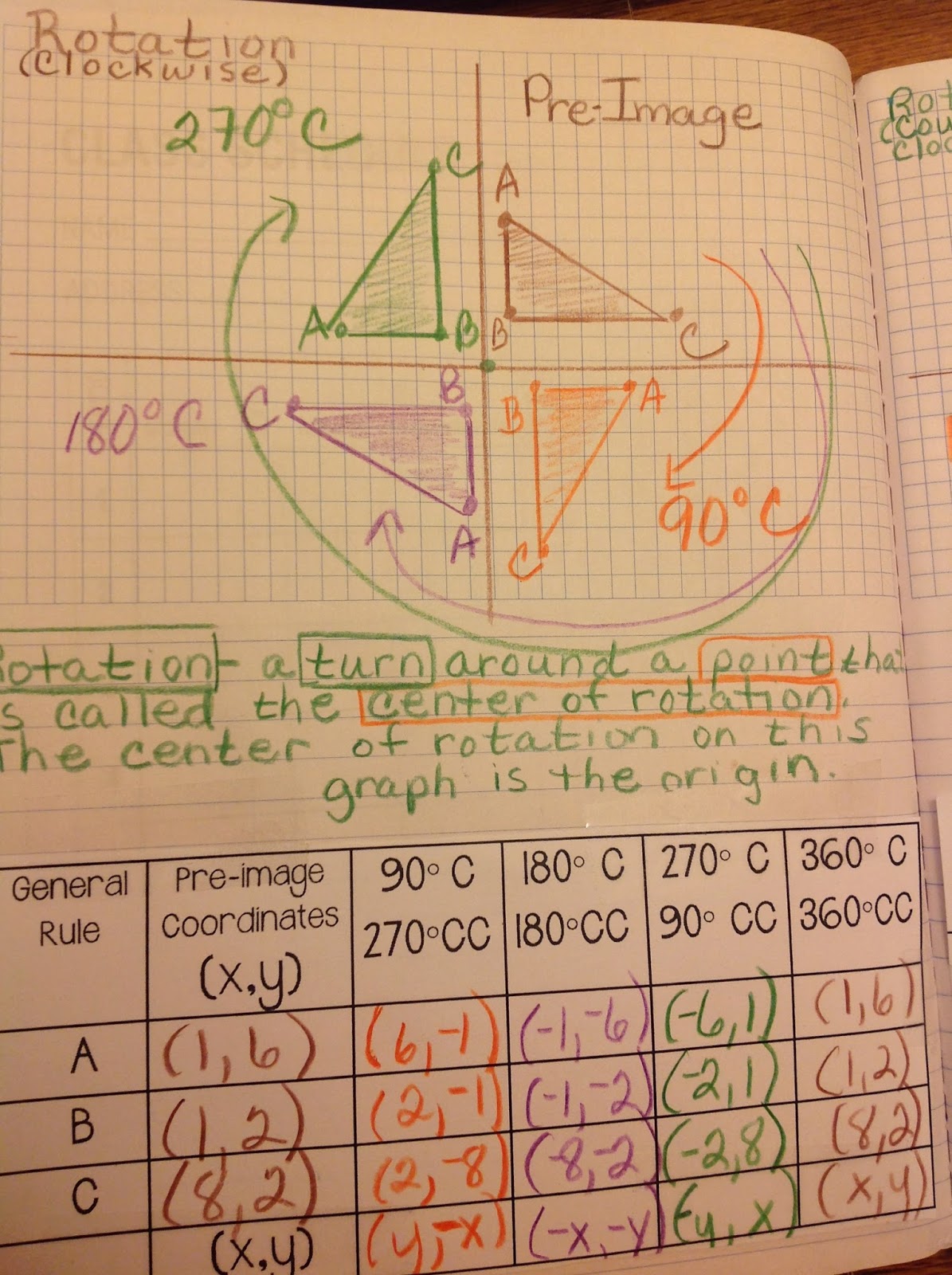
The new corner can be found by rotating each of these arrows according to the following rules:įor example, rotate the shape 90° clockwise without using tracing paper.

To rotate a shape without tracing paper, draw horizontal and vertical arrows from the centre of rotation to each corner of the shape.
#Clockwise rotation rules how to
How to Rotate a Shape Without Using Tracing Paper The upward-facing arrow will be facing to the left after a 270° clockwise rotation. 270° is 3 lots of 90° and so, 270° is equivalent to three-quarters of a turn. Rotate the shape 270° clockwise about the point using tracing paper.Įvery lot of 90° is equivalent to a quarter turn. Use the grid lines of the paper to help line up the arrow correctly, ensuring that it is completely horizontal.

The easiest way to rotate a shape is to use tracing paper.įor example, use tracing paper to rotate the shape 90° clockwise about the point.Īfter a 90° clockwise rotation, the upwards arrow is facing right. Draw the shape in this new position below the tracing paper.Stop when the arrow is facing either right (for 90° CW / 270° CCW turn), down (for 180° turn) or left (for 270° CW / 90° CCW turn).Keep the pen over the centre of rotation and rotate the tracing paper.Draw an arrow from the centre of rotation pointing upwards.Place the tracing paper over the shape and draw around the shape.How to Rotate a Shape Using Tracing Paper Simply switch the x and y coordinates to get (1, 3) and then multiply the 1 by -1 to get (-1, 3). Simply switch the x and y coordinates and multiply the coordinate with the negative sign by -1.įor example, to rotate the point (3, 1) 270° clockwise, it becomes (-1, 3). To rotate a shape 270° counter-clockwise about the origin, the coordinates (x, y) become (y, -x). To rotate shape 270° clockwise about the origin, all original coordinates (x, y) becomes (-y, x). For example, the coordinate (-1, -4), will move to (1, 4) after a 180° rotation. If a coordinate is negative, it will become positive after a 180° rotation. Simply multiply each coordinate by -1 to rotate a shape 180°.

For example, a coordinate at (3, 1) will move to (-3, -1) after a 180° rotation. To rotate a shape by 180° clockwise or counter-clockwise, the rule is to replace the (x, y) coordinates with (-x, -y). To use this rule, simply switch the (3, 1) to (1, 3) and then make the 3 negative to get (1, -3). Simply switch the x and y coordinates and multiply the coordinate with the negative sign by -1.įor example, use the rule (x, y) to (y, -x) to rotate the shape 90° clockwise. To rotate a shape 90° counter-clockwise about the origin, the coordinates (x, y) become (-y, x). To rotate shape 90° clockwise about the origin, all original coordinates (x, y) becomes (y, -x). The rules for rotating shapes using coordinates are: Rules for Rotating a Shape About the Origin When rotated, a shape remains the same distance away from the centre of rotation. The original shape is called the object and the rotated shape is called the image. You can tell that a shape has been rotated because it is not facing the same direction as it was originally. We also need to know what angle and direction the shape is rotated in.įor example, this triangle has been rotated 90° counter-clockwise about the point. A shape is often rotated about a specific point called the centre of rotation.

The size and shape do not change during rotation. Rotating a shape means to change its direction by turning it.


 0 kommentar(er)
0 kommentar(er)
